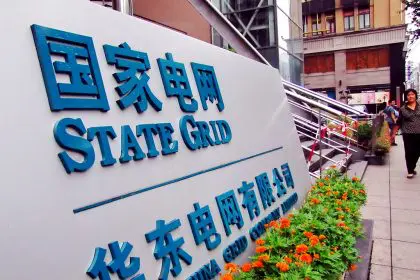Wanchain outlined a special consensus arrangement and privacy-protecting techniques that will seamlessly integrate with their present design.
The State Grid Corporation of China, which earned over $363 billion four years ago becoming one of the largest utility companies in the world, is revamping its data systems for better management and oversight. It has subsequently chosen Wanchain‘s Distributed Ledger Technology (DLT) solutions, according to a press release on Mar 30.
China’s Electric Grid Operator Modernizing
The new system cuts across their departments and regions leveraging tested blockchain solutions and Wanchain’s T-Bridge framework.
The framework rides on Wanchain’s cross-chain expertise, linking permission and public networks. Additionally, State Grid will use smart contracts for process automation and streamlining in combination 5G and other applicable technologies.
Commenting, Jack Lu, a Peking University graduate and the co-founder, said the State Grid’s selection points to the importance of genuinely interoperable solutions meeting enterprise needs that also spur adoption. He added that he was proud that Wanchain was selected in data management modernization efforts, confirming their solutions as superior.
The announcement follows a thorough practicality study gauging how blockchain is applicable in data management. As an operator of electric networks in an economic powerhouse and the most populous nation on earth, efficiency in handling huge chunks of data is essential.
Wanchain Solutions Improves Efficiency in State Grid’s Data Management
The State-owned firm supplies electricity to billions of people in over 25 provinces in China. Given how energy is important in advancing China’s ambitions, the electric operator is an important security and economic lifeline of the industrial powerhouse.
Due to the transparency and efficiency of blockchain systems, Wanchain vividly demonstrated how the grid operator can benefit from this integration after an extensive analysis. This was specifically in light of their unique requirements.
Wanchain outlined a special consensus arrangement and privacy-protecting techniques that will seamlessly integrate with their present design.
Powering True DeFi
Wanchain’s forte is in providing decentralized interoperable blockchain solutions. Describing itself as “a premier decentralized blockchain cross-chain solution provider,” Wanchain is one of the oldest.
It is also keen on powering true DeFi, which they maintain should be inherently interoperable. Wanchain is a creation of Wanglu Tech, a $580 million Company in China whose CEO is Jack Lu.
After a successful ICO in 2017, they forked some of Ethereum’s code (enabling EVM compatibility), proceeding to build an interoperable platform without missing any of their roadmap’s milestones.
Wanchain 5.0 Mainnet and BTC-ETH Direct Bridge
In Nov 2020, they launched the Wanchain 5.0 Mainnet. This introduced two-way wanBridges that enabled native assets and tokens to move back and forth between bridged blockchains. The release was lauded as a foundation for the project’s cross-chain mechanism and capabilities.
Notably, with the upgrade, their cross-chain mechanism was upgraded to strike a better balance between complete decentralization and usability. Accordingly, the team opened up the Wanchain’s Storeman nodes—which build and run cross-chain bridges—to the public.
Following through on the mainnet upgrade, Wanchain’s 4th Storeman group debuted Universal Multichain Bridges with Shared Staking Assets in early March. This enabled all of Wanchain’s different cross-chain integrations to be powered by a unified decentralized collateral pool. At the same time, they released the world’s first decentralized BTC-ETH direct bridge enabling the direct transfer of Bitcoin (BTC) to Ethereum (ETH) without Wanchain acting as a router.
Founder and editor at BTC PEERS. Andrey writes about financial experiments, DeFi, cryptocurrency, and blockchain.




